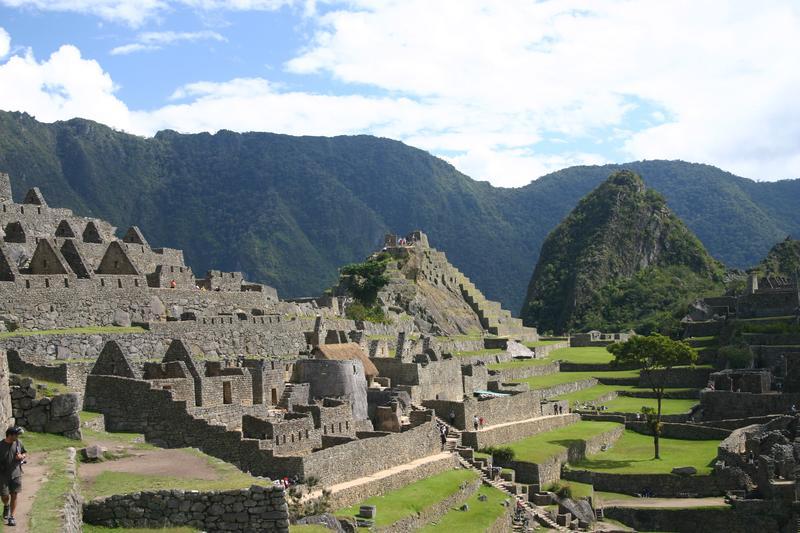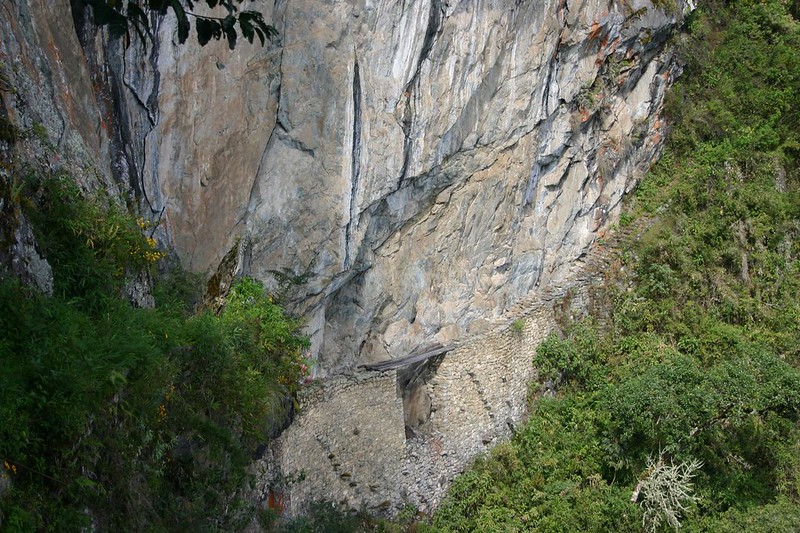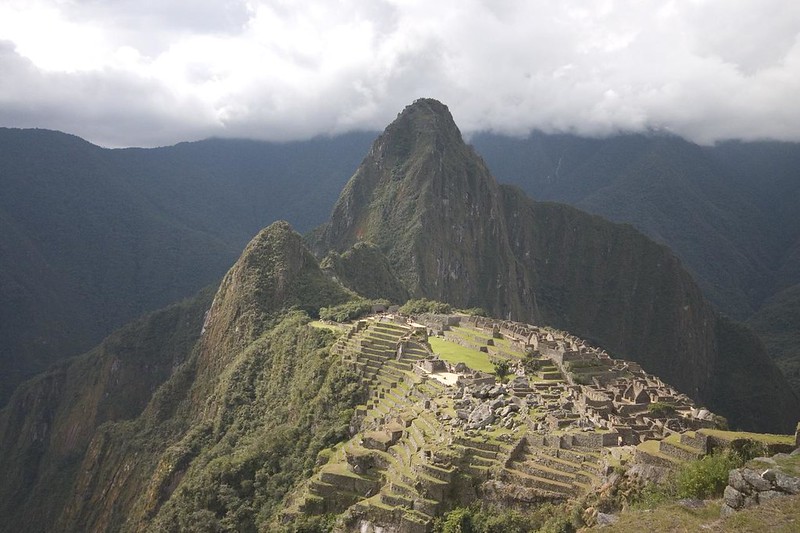On the seventh day, it was not a day of rest for us – it was one of the most anticipated days of the trip with a 4:30am start. It may sound awful; but it wasn't. We were going to Machu Picchu. The reason for the early start was that we had to be at San Pedro station for 6am so we could make it to Aguas Calientes (Spanish for “warm water”) as early as possible. We actually made it to the train station with time to spare despite the hotels promise of a 5:00am breakfast arriving at 5:20am with no time to eat it. The train we took to Aguas Calientes was a little different to British trains – it was called a Vistadome as it had windows in the roof too. PeruRail use these trains so that tourists can see everything around them on 4 hour train journey.
As the trains are short on space, all we could take were our backpacks – our luggage had to be left at the Samay hotel in Cusco for a couple of days until we got back. What was nice about the trip, despite the tiredness was the breakfast we got on the train and the amazing views of the the valley, and the Inca trail that we could see on the way. Strangely we didn’t get to check in to the hotel (the Hanaqpacha Inn) so I took my backpack with lenses and cameras up Machu Picchu to the ruins without being able to empty what I didn’t need. We didn’t climb Machu Picchu (that’s the name of the mountain and not the ruins on it), we instead took the bus up to the top which took around 25 minutes. It’s the easy way to do it and doesn’t really give the same experience – but it meant we could spend more time looking around the extensive site of ruins.
Machu Picchu is both a UNESCO World Heritage site, and a UNESCO World Cultural site with it’s very distinctive ruins, and the nearby Huayna Picchu which features in almost every photograph people take at Machu Picchu. The best observation point for the ruins is where we headed first – to the guard house. It was from around this point that most of the “famous” views of Machu Picchu have been taken due to how amazing it looks to have the ruins offset by Huayna Picchu behind them; photos really don’t do the place justice. From there we gradually worked our way around the ruins taking a phenomenal number of photographs.
By 13:00 our guide had left us to explore by ourselves; it was a good thing really as she commented on the rocks (their size and shape) almost continuously. We took this opportunity to go around taking more photographs and to sit around admiring the view for a while. One of the places we visited during this time was the “Inca bridge”. It was a reasonable walk round to it, but along a precarious path that was less than a metre wide in places with an extremely large drop at the edge of the path. It’s not like England where we insist on putting barriers up everywhere to keep people safe – if you got too close to the edge you’d be plummeting quite some distance. After finally making it round to the Inca bridge there wasn’t much to see – just a huge gap in the path with a few planks of wood stretched across.
Once we’d done at Machu Picchu we went back down the mountain to Aguas Calientes to look around the market we’d passed earlier that day. It was quite a large market and took us about few hours to look around buying souvenirs to take back home. Other than a statues of Timu I’d bought for $30 in Nasca I hadn’t really bought much up until then, so I bought a Machu Picchu t-shirt, a couple of ornaments of Machu Picchu, an Incan Cross fridge magnet, and a couple of animals carved from the local stone.
As we hadn’t bothered with lunch and it was starting to get quite late we decided to see what restaurants there were. Most of them were pizzerias, but we went with a small restaurant called Julio’s where I tried a peppered Alpaca steak and a strawberry pancake – both were absolute delicious. If you’ve not tried Alpaca before then it tastes like beef, only sweeter.



